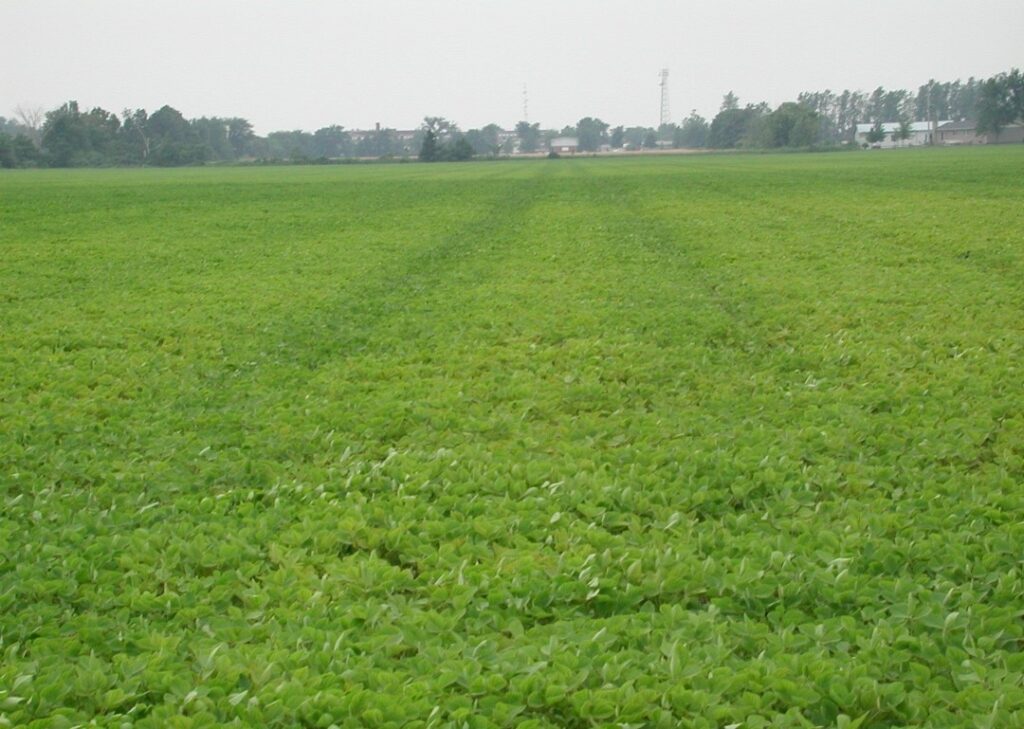Manganese (Mn) is the only micronutrient deficiency diagnosed in soybeans across a wide acreage annually in Ontario, although zinc deficiency may appear where the topsoil has been lost through erosion.
Manganese deficiency symptoms appear on upper leaves, ranging from pale green (slight deficiency) to almost white (severe deficiency) with green veins, see figure 1. Soil tests and plant analyses are useful in predicting where manganese deficiencies are likely to occur. Both are available at the OMAFRA-accredited laboratories, listed in Factsheet, Accredited Soil-Testing Laboratories in Ontario.

Figure 1. Manganese (Mn) deficiency. Upper leaves appear pale green with green veins.
The following factors influence the extent of Manganese Deficiency:
- As soil pH increases less Mn is available to the plant. Mn deficiency is not usually found in soils with a pH below 6.2. Deficiencies can also appear on eroded knolls where the pH is higher than the rest of the field.
- The deficiency is most common on poorly-drained soils, especially clays and silt loams, but can occur regularly on coarse-textured soils as well.
- High organic matter ties up Mn Symptoms may occur in hollows where organic matter is higher, as well as in muck soils.
- Manganese is less soluble in well-aerated soils, making compacted areas (wheel tracks) a dark green colour, while the rest of the field becomes symptomatic, see figure 2.
- An over-riding factor is that roots must reach manganese to absorb it. Wet soils, extremely dry soils, cool weather, soil compaction, root diseases, nitrogen deficiency and herbicide damage can limit root growth causing Mn deficiency symptoms.

Figure 2. Less Manganese (Mn) deficiency symptoms evident in wheel tracks where there is soil compaction.
To correct a manganese deficiency, a foliar application of Mn is suggested. If the deficiency is severe, a second application may be beneficial. Correct the deficiency once symptoms are evident. A delay of 2 weeks may decrease yields by 10%. A 6-week delay may result in 30% yield loss. When applying micronutrients with a sprayer that has been used to apply herbicides, it’s essential to clean out the spray tank properly to avoid crop injury. Research has shown weed control may be antagonized when glyphosate and Mn products are tank mixed.
It’s also been shown that soil application of manganese is not an effective method, regardless of the source, due to the large amounts required and the quick tie up of Mn in the soil. In general, soybeans will give a profitable response to manganese in the parts of the field where deficiency is evident. There is no benefit to applying manganese to soybeans without deficiency symptoms.